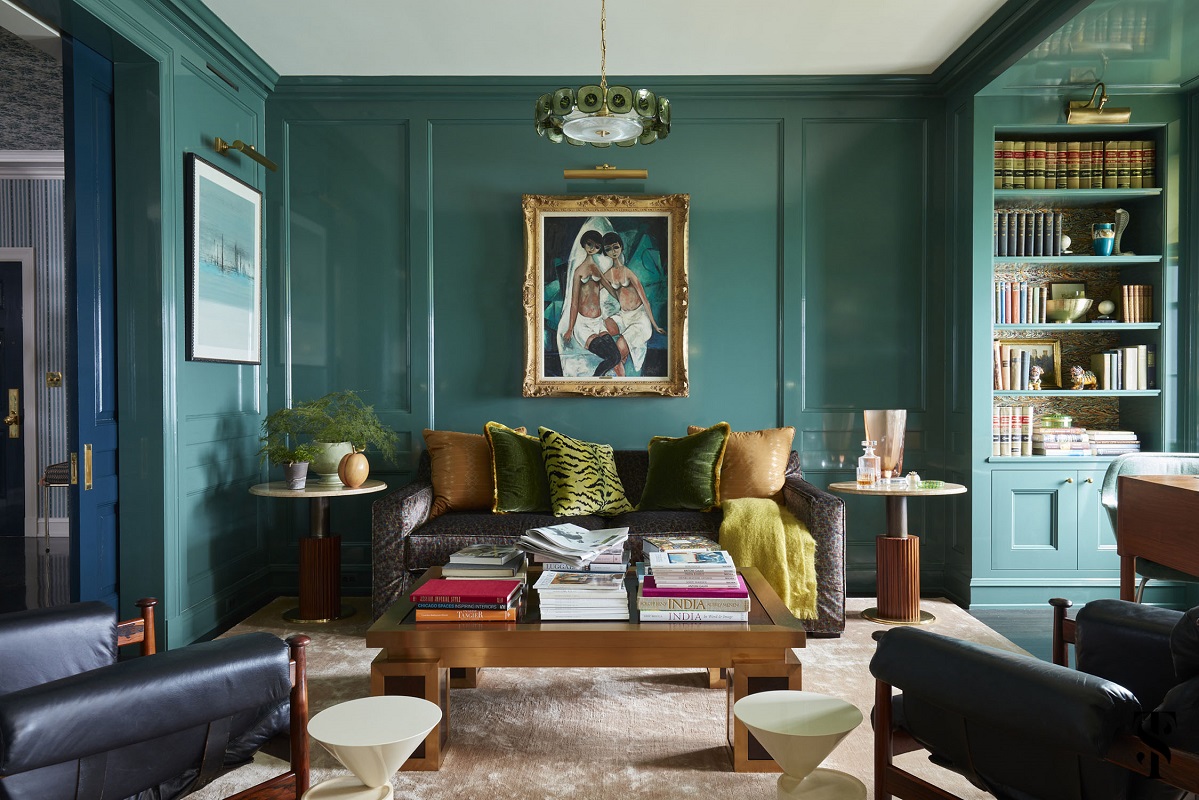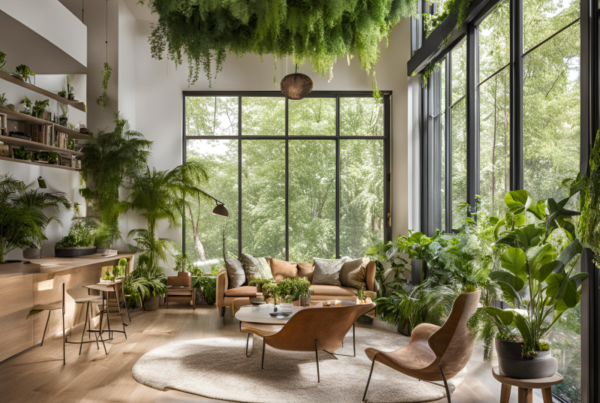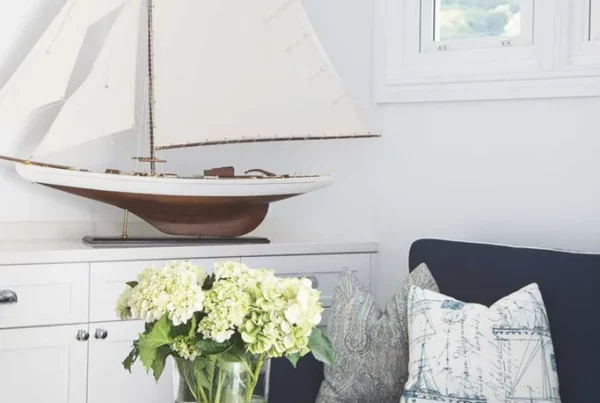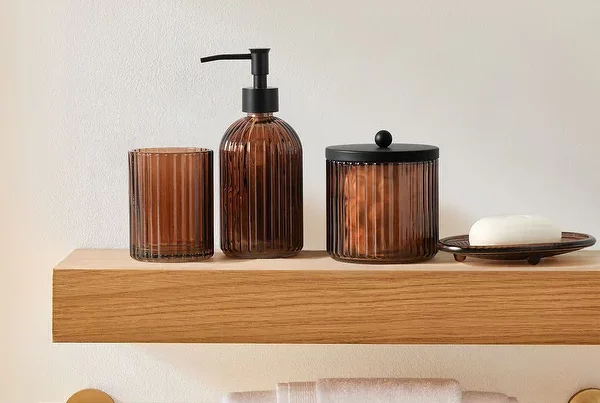In interior design, trim is often overlooked yet plays a crucial role in enhancing the aesthetic and functionality of a space. This article provides a comprehensive guide on selecting the right trim for various styles and design intentions, covering everything from styles and materials to color choices and layering techniques. By understanding how to effectively choose and implement trim, you can elevate your interior design while ensuring that it meets both your aesthetic goals and practical needs.
Whether you’re looking to create a modern minimalist look or a more traditional ambiance, the insights offered here will help you make informed decisions that enhance your home’s character and cohesion. Let’s explore how the right trim can transform your interiors and reflect your personal style.
Table of Contents
The Power of Trim in Modern Design
In the realm of modern design, trim often takes on a transformative role, serving as more than just a decorative element. It introduces a nuanced layer of texture, dimension, and continuity to a space. As homeowners and designers increasingly seek to elevate their environments, understanding the power of trim becomes essential in delivering impactful design solutions.
Enhancing Visual Appeal
One of the most significant impacts of trim in modern design lies in its ability to enhance visual appeal. Trim elements, such as crown molding, baseboards, and window casing, can curate a seamless flow throughout a room. The careful selection of trim style and material can align with overall project aesthetics, turning mundane corners and transitions into captivating features. For instance:
- Crown Molding: This classic trim detail draws the eye upward, giving an illusion of higher ceilings and adding elegance to any space.
- Baseboards: From simple to elaborate designs, baseboards frame the ground level of a room, anchoring furniture and drawing lines that create a sense of order.
- Chair Rails: These functional additions offer both protection to walls and a striking visual divide that can be enhanced with contrasting paint colors or finishes.
The weight of these visual enhancements can lead to spaces that feel more sophisticated, tailored, and coherent—qualities highly coveted in modern aesthetics.
Creating Structure and Definition
Trim serves as a structural element that provides definition within an interior. It segments spaces, highlights architectural features, and creates boundaries without the need for physical barriers. For example, using trim strategically can delineate areas in an open concept floor plan:
- Visual Separation: Specific trim styles can visually separate dining and living areas, even in an expansive layout.
- Room Identity: Variations in wall trim can reflect different purposes for spaces, enhancing the functionality and character of each area.
- Accent Features: Adding trim around fireplaces or built-in shelves emphasizes these focal points, making them more appealing.
By thoughtfully implementing trim, designers can cultivate a sense of order while enhancing the flow of the design narrative. This attention to detail often distinguishes exceptional spaces from the ordinary.
Trimming for Current Trends
Modern design trends tend to embrace minimalism and functionality, yet the presence of trim continues to gain traction, merging the old with the new. Today’s designers are increasingly incorporating trim as a way to celebrate craftsmanship and individuality. Recent trends include:
- Bold Colors: Using vibrant paint on trim can create stunning contrasts against neutral wall colors, making trim a focal point instead of a mere outline.
- Mixing Materials: Combining wood, metal, and even textiles in trim creates unique textural contrasts that resonate well within eclectic design schemes.
- Geometric Patterns: Incorporating geometric patterns into trim can align with modern aesthetics, providing a contemporary twist on traditional forms.
These approaches not only amplify the aesthetic impact of trim but also connect the design to broader cultural narratives, showing how classical elements can cohesively relate to contemporary lifestyles.
Incorporating Technology and Innovation
In today’s technologically advanced world, innovations in materials and design processes have allowed trim to evolve in exciting ways. Smart home technologies, for example, are beginning to inform how trim is utilized. Designers are now considering:
- LED Lighting Integration: Trim designs can incorporate LED lighting, adding ambiance and practicality, particularly in areas such as molding or staircases.
- Environmentally Friendly Materials: The rise of sustainable design has seen trim made from recycled or responsibly sourced materials, appealing to eco-conscious consumers.
These innovations not only reflect a shift in design practices but also embrace future-ready aesthetics that align with sustainability and technology integration.
In conclusion, the integration of trim in modern design is not merely about decoration but is about enhancing the overall space, providing structure, and connecting traditional craftsmanship with contemporary innovation. With its myriad styles and applications, trim plays a pivotal role in shaping the identities of our interiors.
Discover more insights about trim in home design at HGTV.
Choosing the Right Trim for Any Aesthetic
When it comes to interior design, trim is often an unsung hero that can significantly enhance the overall aesthetic of a space. The right trim not only adds character and depth but also helps tie together various elements of your decor, making it essential to choose wisely. With a plethora of styles, materials, and finishes available, selecting the right trim can sometimes feel overwhelming. However, understanding the fundamentals can make your decision smoother and elevate your interior design game.
Understanding Trim Styles
At the core of choosing trim is recognizing the distinct styles available. Each style conveys a different impression and works better with certain aesthetics:
- Traditional Trim: Often characterized by intricate detailing and moldings, traditional trim is perfect for classic and vintage-inspired interiors. Think crown molding, chair rails, and wainscoting.
- Modern Trim: For a sleek and minimalistic approach, modern trim focuses on clean lines and simple profiles. Ideas include flat boards or thin strips that create a seamless look.
- Rustic Trim: If your design leans toward farmhouse or cabin aesthetics, rustic trim made of reclaimed wood or barn-style accents adds warmth and charm.
- Transitional Trim: Blending traditional and modern elements, transitional trim offers versatility and is suitable for more eclectic designs.
Understanding these styles allows you to align your trim choices with your desired interior aesthetic, ensuring cohesiveness throughout your space.
Material Matters
The choice of material for your trim significantly influences both the aesthetic appeal and the practical aspects of your design. Consider these popular materials:
- Wood: A classic choice that offers warmth and natural beauty. Wood can be stained or painted to fit various styles and is ideal for those looking for traditional or rustic looks.
- MDF (Medium-Density Fiberboard): An affordable and versatile option that can be easily shaped and painted. MDF is excellent for modern designs where intricate shapes are required.
- Polyurethane: This durable and lightweight synthetic option can mimic wood and is perfect for humid areas thanks to its resistance to moisture.
- Metal: Unconventional yet striking, metal trim works well in industrial or modern aesthetics, adding a unique contrast to softer elements.
When selecting materials, think about maintenance and durability, as well as how they complement your overall decor.
Color and Finish Choices
The color and finish of your trim play a crucial role in defining the ambiance of a room. Here are key points to consider:
- Contrast or Blend: Decide whether your trim should stand out or blend in with your walls. A contrasting color can add drama, while a matching hue creates a seamless transition.
- Gloss Level: The finish of the trim, whether matte, satin, or gloss, can impact the perception of space. Glossy finishes reflect light, enhancing brightness, while matte finishes offer a soft and understated elegance.
Experimenting with sample colors against your walls can help visualize how different options affect the overall look of your space.
Functional Considerations
Trim also serves practical functions beyond aesthetics. Consider these functional aspects when making your selection:
- Height and Scale: The height of your trim should be proportional to your ceiling height and the room size. Taller baseboards and crown moldings can make a room feel grander, while smaller trims suit more intimate spaces.
- Durability: If you’re in a high-traffic area, durable materials will withstand wear and tear, especially in homes with pets or children.
Balancing aesthetics with functionality ensures that your chosen trim not only elevates your interior design but also performs well in everyday use.
As you explore the various angles of trim selection, consider how each decision not only reflects your personal style but also creates a harmonious flow throughout your space. With each detail carefully chosen, you’ll pave the way for a cohesive design that celebrates your unique aesthetic. Ready to enhance your design further? The next section will dive into layering trims for additional depth and character, complementing your chosen trim style beautifully.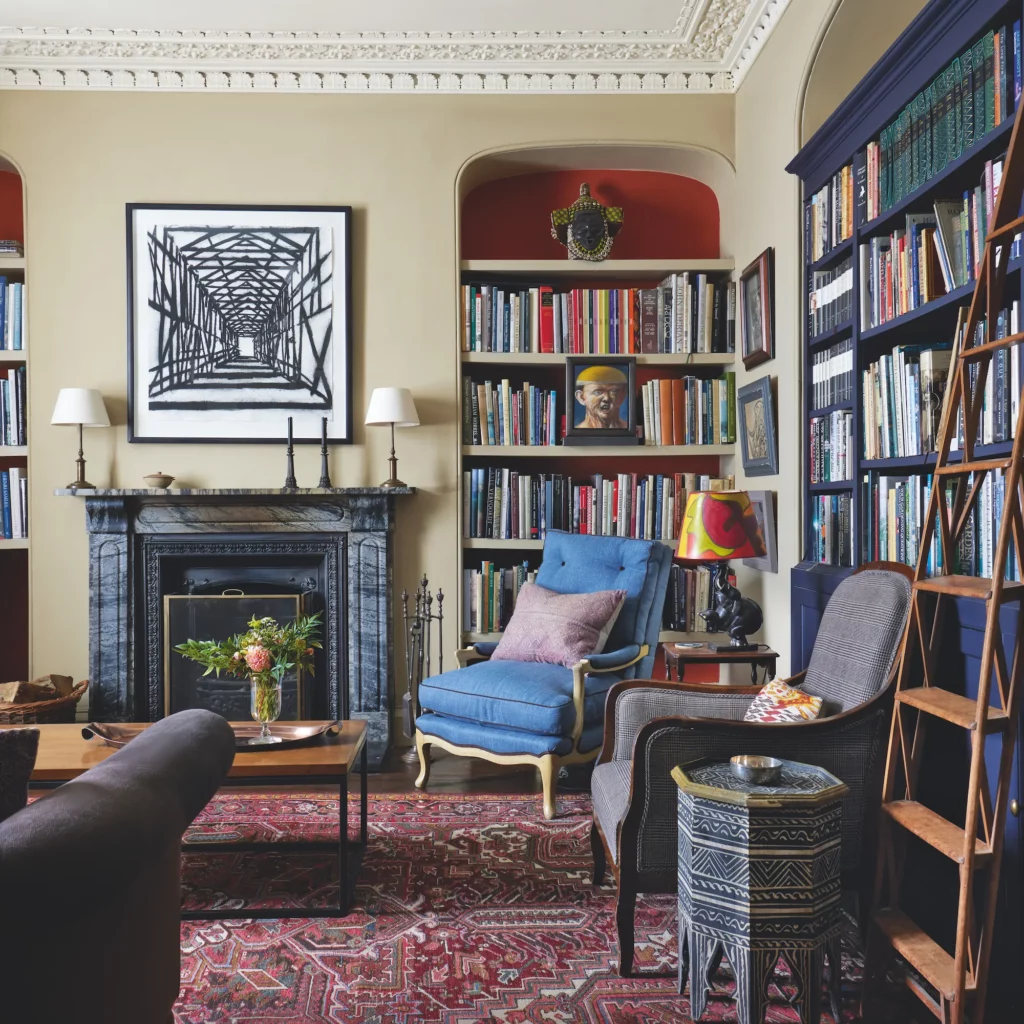
Layering Trims for Depth and Character
When it comes to interior design, one of the most overlooked elements that can dramatically affect the overall aesthetic of a space is the use of layered trims. This design technique not only adds texture and dimension but also introduces a unique character to interiors, transforming ordinary rooms into extraordinary spaces. Understanding how to effectively layer trim can completely redefine the ambiance and style of your home.
The Concept of Layering Trims
Layering trims involves combining different styles, materials, and colors of molding and trim to create a visually rich environment. This approach takes the basics of standard trim work—such as baseboards, crown molding, and wainscoting—and elevates them through thoughtful selection and placement. By mixing various trims, homeowners can achieve a harmonious blend that infuses warmth and personality into each room.
Choosing the Right Trims for Layering
To successfully layer trims, it’s crucial to start with the right selections. Here are some factors to consider:
- Style Cohesion: Ensure that the trims you choose complement each other in style. For instance, modern and traditional trims can clash if not paired thoughtfully. Aim for trims that share similar lines and shapes.
- Color Harmony: Select a color palette that enhances the features of your home. Neutral colors can offer a timeless backdrop, while bold hues can add excitement. Consider the mood you want to convey.
- Material Variations: Mixing materials like wood, MDF, and plaster can introduce a variety of textures, deepening the visual interest. Each material has its unique qualities, and selecting them wisely can contribute to the character of the room.
Techniques for Effective Layering
Once you’ve selected your trims, employing effective techniques for layering is vital. Here are some strategies to consider:
- Height Variation: Utilizing trims of varied heights can create a sense of dynamism in a space. For example, a tall, elegant crown molding paired with shorter baseboards can draw the eye upwards and add stature to a room.
- Contrast Levels: Use contrasting colors or finishes to emphasize specific features. A glossy white crown can pop against matte, darker walls, adding depth and focus to the room’s architecture.
- Transformation Zones: Use layered trims to define different areas within a single space. Wainscoting can delineate dining areas from living spaces, creating visual separations while maintaining flow.
Practical Examples of Layering Trims
Let’s explore a few practical examples that demonstrate layering trims in various designs:
- Classic Elegance: In a traditional home, combining ornate crown molding with detailed wainscoting can introduce a sense of history and refinement. Try installing a chair rail topped with decorative paneling to elevate the room’s sophistication.
- Modern Minimalism: For a contemporary touch, consider using simple, geometric trims with sharp angles. A single-color trim repeated in various sizes can enhance a minimalist aesthetic without overwhelming it.
- Eclectic Charm: Mixing vintage trims with modern elements can create an eclectic look that tells a story. An old farmhouse-style baseboard can look stunning when paired with sleek, modern finishes elsewhere in the room.
Incorporating Trim Layering in Your Home
The beauty of layering trims is that it allows for both creativity and precision. Experimenting with different combinations can lead to discovering unique designs tailored specifically for your space. Think outside the box—perhaps even consider seasonal changes, where you can modify certain trims to reflect a new aesthetic or mood.
To gain deeper insights into effective design techniques, consider visiting Miss Mustard Seed, where you can explore an array of creative inspiration for transforming your home.
Ultimately, layering trims provide not just functional benefits, like framing doors and ceilings, but also serve as a crucial component in adding character and intimacy to your home. Embracing this approach not only enhances your space but also reflects your personal style, making your interiors uniquely yours.
Sustainable Trims in Eco-Friendly Interiors
In the contemporary landscape of interior design, the quest for sustainability has taken center stage. As homeowners and designers alike strive to create spaces that reflect conscientious living, the contribution of sustainable trims cannot be overstated. Utilizing eco-friendly materials for trims not only enhances aesthetic value but also promotes environmental responsibility. This article delves into various aspects of sustainable trims, exploring materials, benefits, and innovative design approaches that prioritize eco-friendliness.
What Makes Trims Sustainable?
Sustainable trims are those made from materials that have minimal impact on the environment throughout their lifecycle. This includes consideration for the sourcing, production, and end-of-life disposal or recyclability of the materials used. Key characteristics of sustainable trims include:
- Renewable Resources: Many sustainable trims are derived from renewable resources, such as bamboo or sustainably harvested wood, which regenerate quickly and decrease the demand on finite resources.
- Low VOC Emissions: Choosing trims that are low in volatile organic compounds (VOCs) ensures better indoor air quality and reduces the overall footprint of the materials used.
- Recycled Materials: Trims created from recycled products, such as reclaimed wood or recycled plastics, contribute to reducing waste and the energy consumption associated with new material production.
Popular Sustainable Trim Options
When it comes to selecting sustainable trims, there are various options that not only lend sophistication and elegance to your interiors but also uphold eco-friendly principles. Here are some popular choices:
- Bamboo Trim: Bamboo is fast-growing and can be harvested sustainably, making it a renewable resource ideal for eco-friendly interiors. Its natural aesthetic and durability make it a desirable alternative to traditional wood.
- Reclaimed Wood Trim: Utilizing reclaimed wood not only adds character to a space but also repurposes materials that would otherwise contribute to landfill waste. Each piece tells a story, enhancing both style and sustainability.
- Cork Trim: As a renewable byproduct of the cork tree, cork is naturally resistant to mold and pests, making it a practical and eco-friendly trim option. It also offers excellent thermal and acoustic insulation properties.
- Recycle Plastic and Composite Trims: These materials are made from post-consumer waste, reducing environmental impact by minimizing landfill contributions. They also come in a variety of colors and finishes, making them versatile for numerous design themes.
Designing with Sustainable Trims
Integrating sustainable trims into your home requires thoughtful planning and creativity. Here are some design tips to help you make the most of your sustainable materials:
- Create Contrast: Pair sustainable trims with other materials to create a visually striking contrast. For example, combining reclaimed wood trim with sleek modern elements can highlight the rustic charm while enhancing the contemporary feel of a space.
- Use as Accent Elements: Consider using sustainable trims to accentuate architectural details, such as door frames, window sills, and ceilings. This technique not only brings a touch of nature indoors but also showcases craftsmanship.
- Layering Textures: Layering different types of sustainable trims adds depth and character to an interior. For instance, combining bamboo trims with cork can create a rich textural experience that captivates the eye.
The Benefits of Sustainable Trims
Beyond their aesthetic appeal, sustainable trims offer a multitude of benefits that align with the values of eco-conscious homeowners:
- Environmental Impact: By choosing trims made from sustainable materials, homeowners can significantly decrease their ecological footprint and contribute to the conservation of natural resources.
- Improved Indoor Air Quality: Sustainable trims often have lower levels of harmful chemicals and VOCs, promoting healthier living environments.
- Increased Property Value: Homes with eco-friendly features, including sustainable trims, may see increased interest and valuation in the market, attracting buyers who prioritize sustainability.
In conclusion, the incorporation of sustainable trims in eco-friendly interiors not only beautifies spaces but also plays a vital role in fostering an environmental consciousness that resonates with today’s homeowners. To explore more about eco-friendly materials and sustainable design practices, consider visiting TreeHugger’s guide to sustainable materials, which provides valuable insights for anyone looking to forge a greener path in their design choices. The article explores the evolving role of trim in modern interior design, highlighting the integration of bold colors, mixed materials, and geometric patterns as key trends that celebrate craftsmanship and individuality. It emphasizes that trim is not only decorative but also connects traditional styles with contemporary aesthetics, enhancing the overall structure and identity of spaces.
Additionally, the article discusses the importance of sustainability in trim selection, showcasing eco-friendly options like bamboo, reclaimed wood, and low-VOC materials. It recommends choosing trims that create visual contrasts, layer textures for depth, and prioritize environmentally conscious practices to improve indoor air quality and increase property value. For practical implementation, homeowners should consider their desired aesthetic, material durability, and harmonizing colors when selecting trim.


